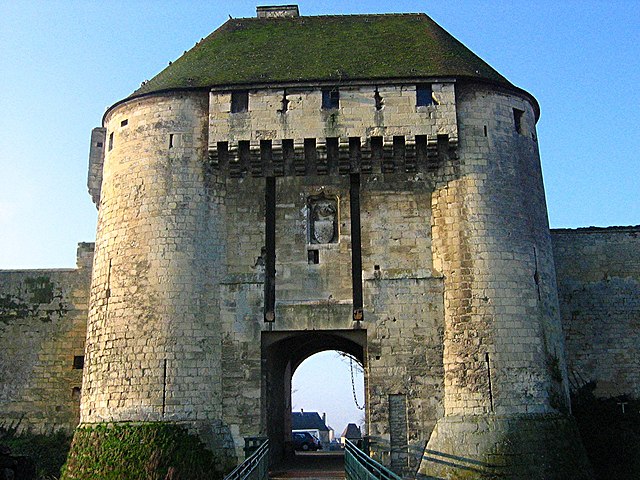Loading AI tools
Castle in the Norman city of Caen in France From Wikipedia, the free encyclopedia
The Château de Caen is a castle in the Norman city of Caen in the Calvados département (Normandy). It has been officially classed as a Monument historique since 1997.[1]


The castle was built c. 1060 by William the Conqueror (William of Normandy), who successfully conquered England in 1066. His son Henry I then built the Saint George's church, a keep (1123) and a large hall for the ducal Court.
On Christmas 1182, a royal court celebration for Christmas in the Aula of Caen Castle brought together Henry II and his sons, Richard the Lionheart and John Lackland, receiving more than a thousand knights.
Caen Castle, along with all of Normandy, was recaptured by the French Crown in 1204. Philip II reinforced the fortifications.
The castle saw several engagements during the Hundred Years' War (1346, 1417, 1450). The keep was pulled down in 1793 during the French Revolution, by order of the National Convention.
The castle, which was used as a barracks during World War II, was bombed in 1944 and seriously damaged.
In 1946, Michel de Boüard, an archeologist from Caen, decided to start excavations in the area of the castle to bring to the light medieval traces. The Musée des Beaux-Arts, which was installed in 1967, opened in 1971.
Now, you can gain access to a pass and tour the large castle, and visit the university located in the centre of the area.
The castle was constructed on a hillock and is now in the middle of the city. With an area of 5.5 hectares, it is one of the largest castles in Western Europe. It remained an essential feature of Norman strategy and policy.

Today, the castle serves as a museum that houses
The keep, now razed, had a large square section with round towers at each corner. As the castle, it was also surrounded by a moat. The dry moat still provides a circuit for walkers.
The top of the ramparts offers a splendid view of Caen. Some parts of the curtain walls were built during the 12th century, but most of them date from the 15th century.
The castle has two main entrances: the porte sur la ville ('gateway to the town') and the porte des champs ('gateway to the fields'); they are reinforced by two barbicans.

Since March 2004, the town of Caen has undertaken the restoration of the ramparts, with the financial help of the ERDF (consolidation, opening of arrow slits walled-up during the 19th century) . 6,000 m³ of earth are being removed, in order to give a better view of the north-west wall of the 12th century. This operation has revealed the cellar of a private house of the 15th century which still has its firehouse, a powder magazine and two walls of a forge of the 14th century. Traces of the stables have also been found.
The base of the keep has been cleared, and people are still working on excavations around it.
Seamless Wikipedia browsing. On steroids.
Every time you click a link to Wikipedia, Wiktionary or Wikiquote in your browser's search results, it will show the modern Wikiwand interface.
Wikiwand extension is a five stars, simple, with minimum permission required to keep your browsing private, safe and transparent.